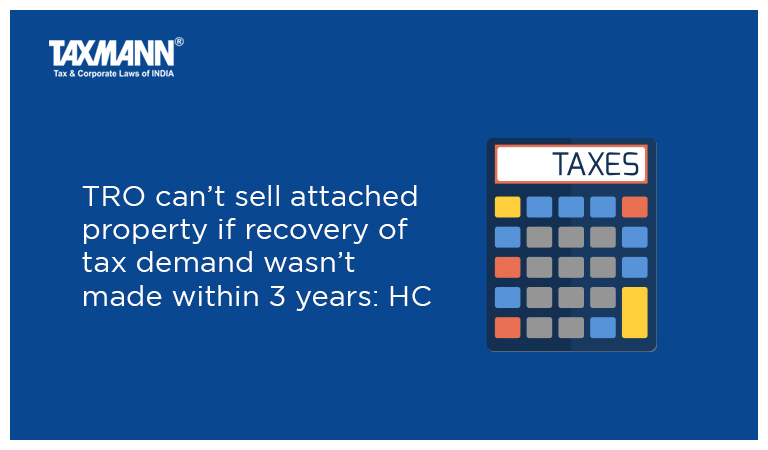TRO can’t sell attached property if recovery of tax demand wasn’t made within 3 years: HC
- Blog|News|Income Tax|
- 2 Min Read
- By Taxmann
- |
- Last Updated on 9 August, 2022

Case Details: S. Sebastine v. CIT - [2022] 140 taxmann.com 604 (Madras)
Judiciary and Counsel Details
-
- C. Saravanan, J.
- Lakshmi Gopinathan for the Petitioner.
- M. Swaminathan, Sr. Standing Counsel for the Respondent.
Facts of the Case
A survey was conducted on business premises of assessee and his father on 7-7-1999 which culminated in a block assessment order. Tax Recovering Officer (TRO) passed an attachment order in respect of a property of assessee on 17-2-2004 for recovering amount of tax due – Further, an order of sale of property was passed on 28-3-2014 and, accordingly, an auction notice dated 21-4-2014 of attached property was issued to assessee.
Assessee challenged impugned auction notice stating that sale of his attached property should have been made within three years from date of attachment as specified in rule 68(b) of IInd schedule.
High Court Held
The Madras High Court held that Rule 4 of the IInd Schedule provides one of the alternate methods for recovering the tax. Apart from attaching the property and bringing the property for sale, TRO can also arrest defaulters and detain such person in prison or appoint a Receiver for the management of the defaulter’s property both movable and immovable property. The tax liability of the assessee does not get effaced by efflux of time. TRO can attach the property under rule 48 read with rule 60 and bring the same property for sale in terms of the provisions of the IInd schedule to the Income-tax Act, 1961.
Even if Rule 68(b) contemplates no sale beyond the period of limitation specified therein i.e., 3 years during the period when the impugned proclamation of sale was issued, it does not mean that TRO cannot issue a fresh order of attachment of the property.
There are also other methods available under the Rules for recovering the tax due together with interest. Therefore, the court allowed this writ petition in light of the limitation prescribed in Rule 68(b). Liberty was granted to TRO to initiate recovery proceedings from the petitioner in terms of the other provisions of Rules including a fresh proceeding for attaching the subject property.
List of Cases Referred to
-
- T. Subramanian v. Tax Recovery Officer [2017] 83 taxmann.com 229/249 Taxman 170 (Mad.) (para 6).
Disclaimer: The content/information published on the website is only for general information of the user and shall not be construed as legal advice. While the Taxmann has exercised reasonable efforts to ensure the veracity of information/content published, Taxmann shall be under no liability in any manner whatsoever for incorrect information, if any.

Taxmann Publications has a dedicated in-house Research & Editorial Team. This team consists of a team of Chartered Accountants, Company Secretaries, and Lawyers. This team works under the guidance and supervision of editor-in-chief Mr Rakesh Bhargava.
The Research and Editorial Team is responsible for developing reliable and accurate content for the readers. The team follows the six-sigma approach to achieve the benchmark of zero error in its publications and research platforms. The team ensures that the following publication guidelines are thoroughly followed while developing the content:
- The statutory material is obtained only from the authorized and reliable sources
- All the latest developments in the judicial and legislative fields are covered
- Prepare the analytical write-ups on current, controversial, and important issues to help the readers to understand the concept and its implications
- Every content published by Taxmann is complete, accurate and lucid
- All evidence-based statements are supported with proper reference to Section, Circular No., Notification No. or citations
- The golden rules of grammar, style and consistency are thoroughly followed
- Font and size that’s easy to read and remain consistent across all imprint and digital publications are applied




